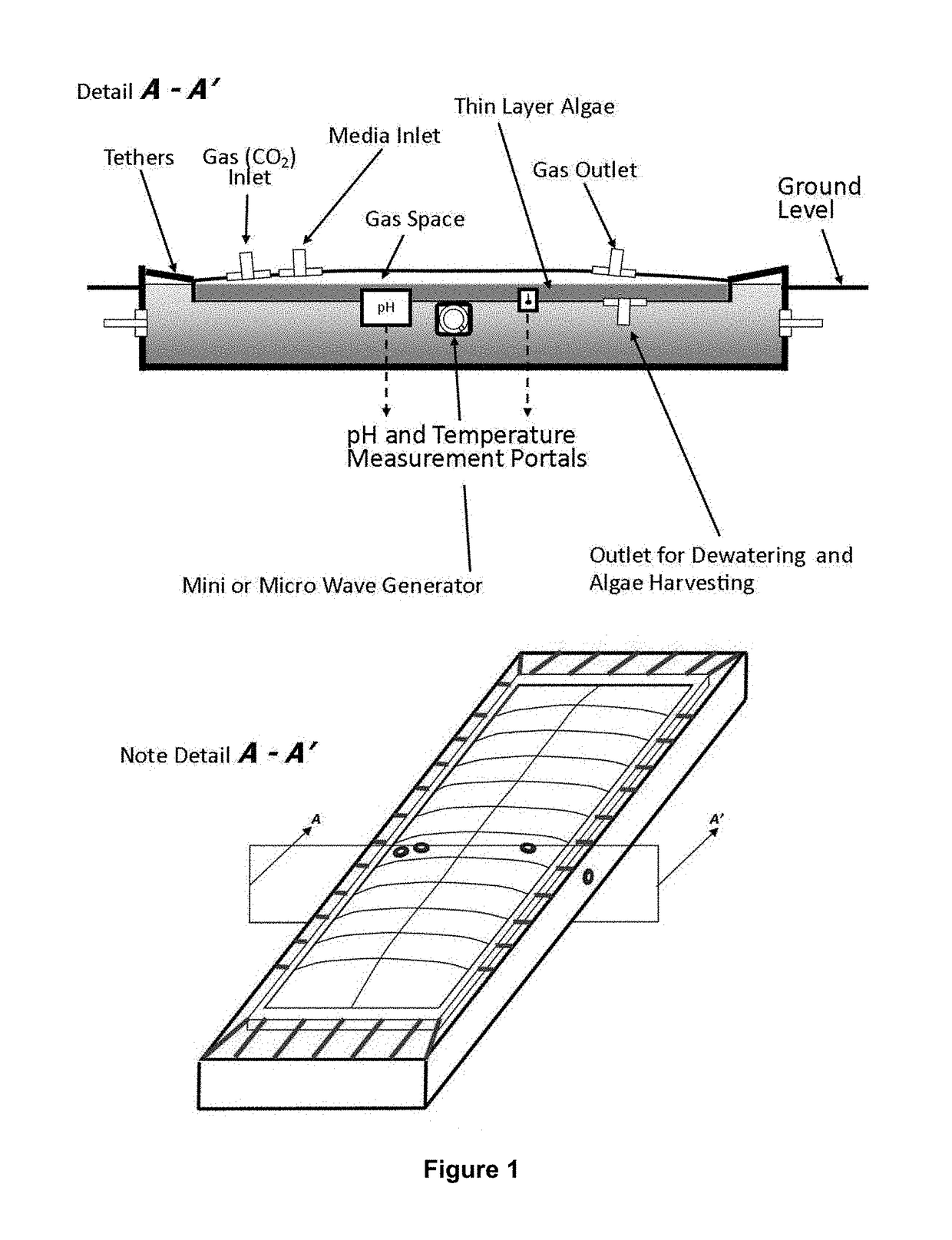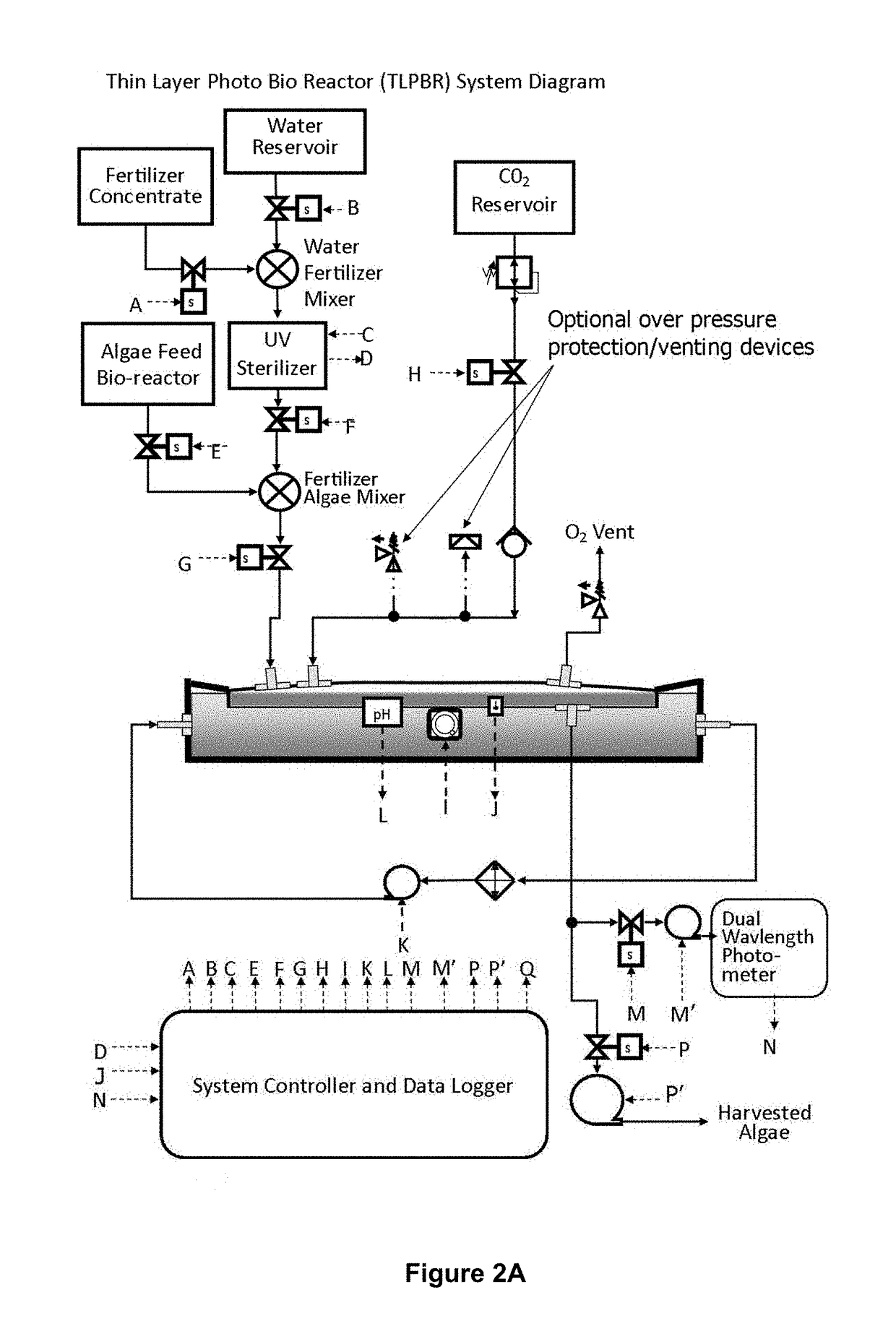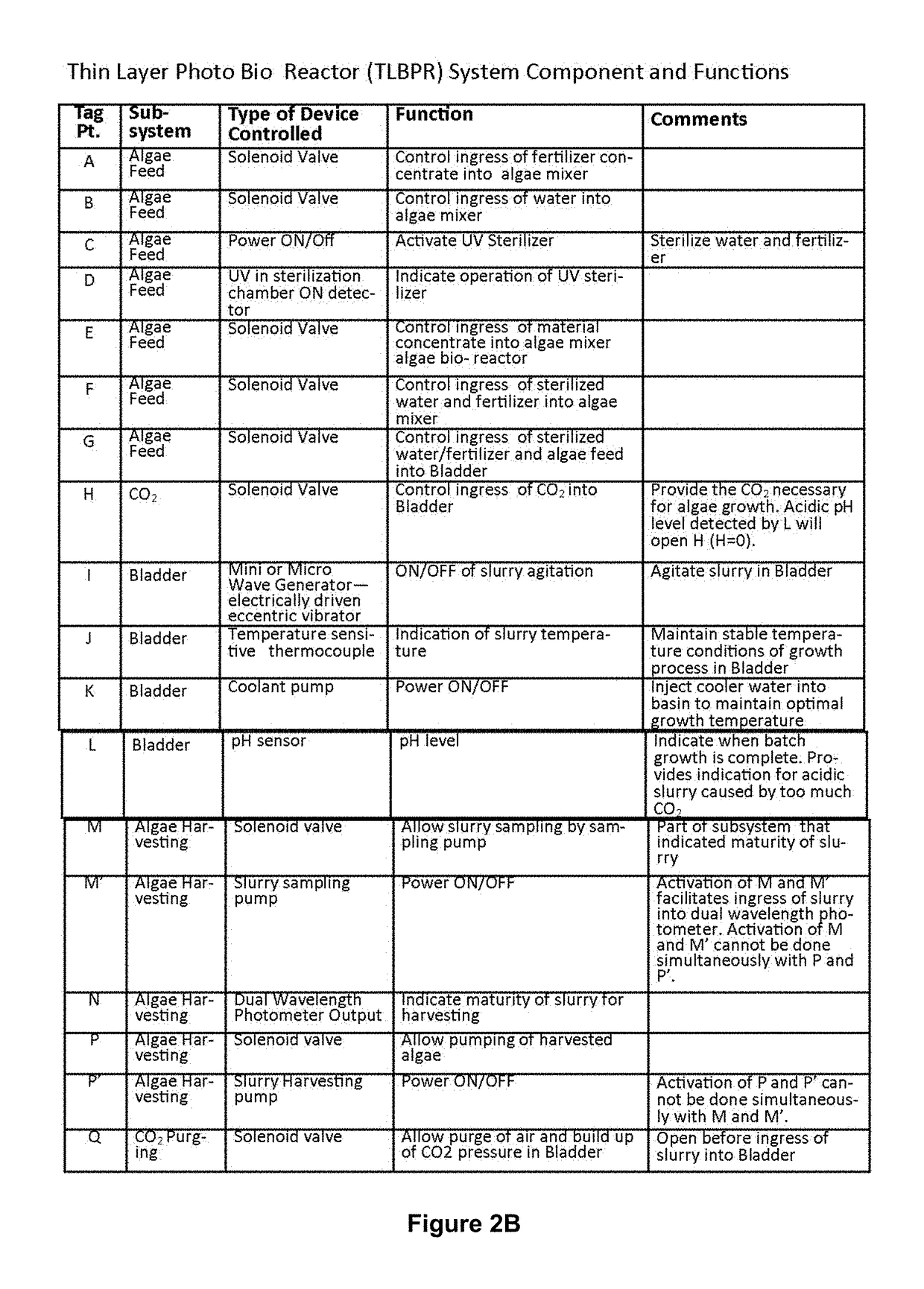Photobioreactor for enclosed horizontal cultivation of microalgae
a photobioreactor and microalgae technology, applied in the field of closed system photobioreactors, can solve the problems of high running cost, large loss of carbon dioxide to the atmosphere, and high structure cost, and achieve the effect of preventing inhibition of photosynthesis, reducing the amount of fertilizer wastage, and reducing the cost of operation
- Summary
- Abstract
- Description
- Claims
- Application Information
AI Technical Summary
Benefits of technology
Problems solved by technology
Method used
Image
Examples
example 1
Laboratory Proof of Concept
[0085]As shown in FIG. 11, a large plastic basin filled ⅔ with water was fitted with a 4×4 cm wooden board the width of the basin with a rod mounted perpendicular to the center of a long side of the board. The rod was mounted through a plastic pipe just larger than the rod, acting as a bearing to ensure up and down motion. The rod was attached to eccentric cam via a short rod with bearings at either end, on a slow, adjustable motor, such that when the motor is activated, the up and down movement on the board generated waves.
[0086]Grommets are welded ca. 1 cm below the seams on sealed ends food-grade polyethylene sleeve (typically but not exclusively) 0.5 mm thickness) such that it could be loosely or spring-tethered flat on the water with thick rubber bands. Various sealable ports are inserted in the upper sheet of the sleeve: an inlet for medium, an inlet for CO2, an outlet with pressure valve that keeps the airspace inflated and releases excess gas, an i...
example 4
ration by Piezoelectric Activated Wires
[0108]Piezoelectric devices are amongst the most energy efficient manner of generating vibrations. Miniature vibrations in a thin layer of medium can be sufficient to execute the gas exchange of CO2 from the air space to the medium. In this case wave motion is not needed and the subtending water will just serve as a temperature stabilizer and not a mechanical mixer as well.
[0109]Piezoelectric wires are embedded into the laminated bottom plastic at various distances during plastic sheet fabrication (FIG. 6A) or single transducers are embedded inside (FIG. 6B) or attached beneath the photobioreactor (not shown). Otherwise, the photobioreactor construction is the same as in Example 2. The algae are introduced into the photobioreactors as a dense suspension in a thin layer of 2.5-5 mm, except for a slightly sunken chamber made for the tip of the pH electrode. Experiments in these photobioreactors must be undergone for a long duration to ascertain t...
example 5
Wave Generation by Mini-Vibrators Attached to the Bottom Plastic
[0114]Mini-vibrators devices are highly energy efficient in generating vibrations. Miniature vibrations in a thin layer of medium can be sufficient to execute the gas exchange of CO2 from the air space to the medium. In this case wave motion is not needed and the subtending water will just serve as a temperature stabilizer and not a mechanical mixer as well.
[0115]The mini-vibrators and their electrical feedwires are embedded into the laminated bottom plastic at various distances during plastic sheet fabrication (FIG. 7), glued to the underside of the photobioreactors (FIG. 8A). Otherwise, the photobioreactor construction is the same as in Example 4. The algae are introduced into the photobioreactors at 2-4 times the density but to a thin layer of 2.5-5 mm, except that a slightly sunken chamber is made for the tip of the pH electrode. Experiments in these photobioreactors must be undergone for a long duration to ascertai...
PUM
| Property | Measurement | Unit |
|---|---|---|
| thickness | aaaaa | aaaaa |
| thickness | aaaaa | aaaaa |
| depth | aaaaa | aaaaa |
Abstract
Description
Claims
Application Information
 Login to View More
Login to View More - R&D
- Intellectual Property
- Life Sciences
- Materials
- Tech Scout
- Unparalleled Data Quality
- Higher Quality Content
- 60% Fewer Hallucinations
Browse by: Latest US Patents, China's latest patents, Technical Efficacy Thesaurus, Application Domain, Technology Topic, Popular Technical Reports.
© 2025 PatSnap. All rights reserved.Legal|Privacy policy|Modern Slavery Act Transparency Statement|Sitemap|About US| Contact US: help@patsnap.com



